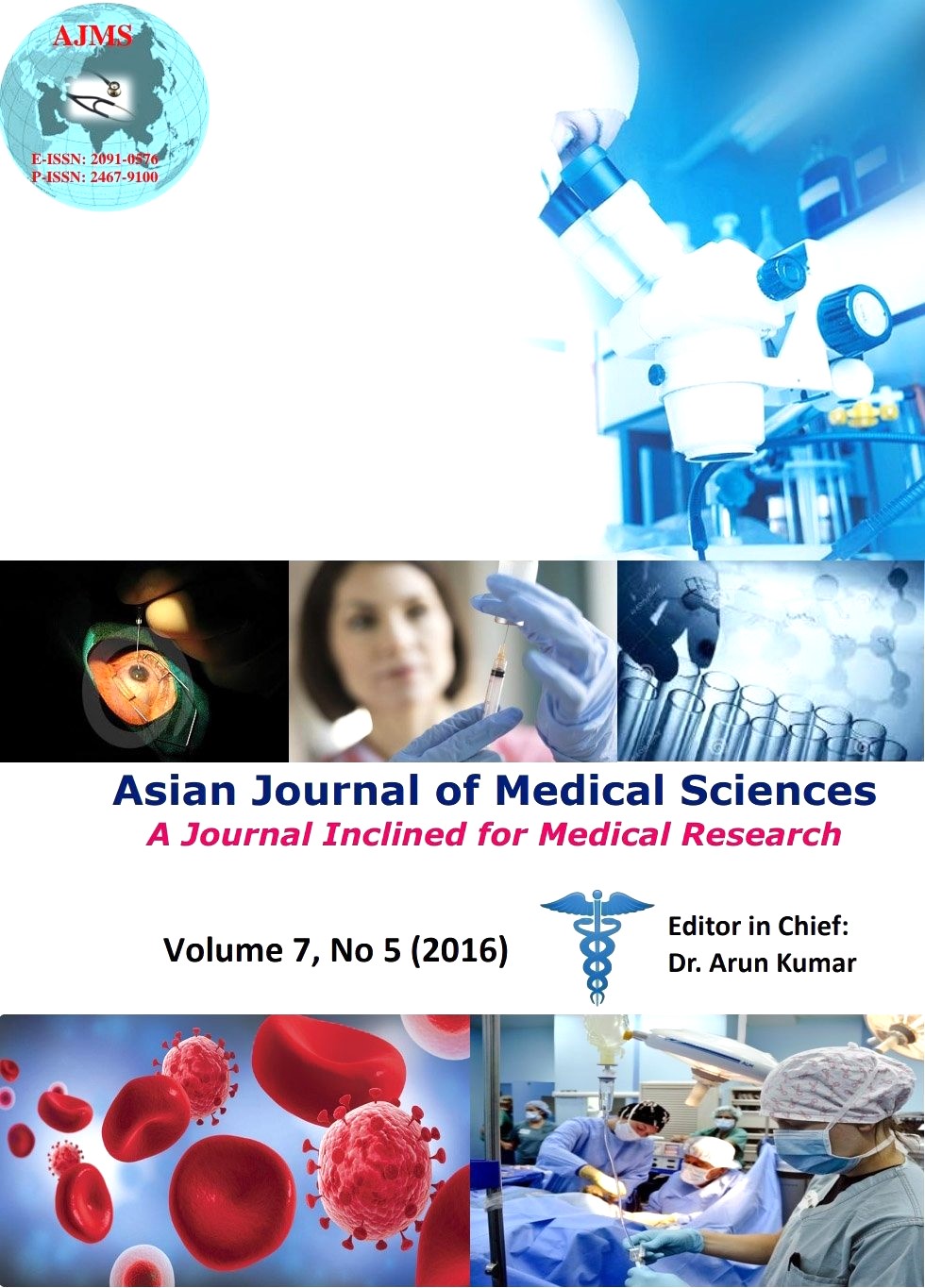Effect of postmenopausal status on insulin sensitivity in myanmar women
Keywords:
Body mass index (BMI), Fasting blood glucose, Fasting serum insulin, HOMA-IR, Postmenopausal womenAbstract
Background: Animal studies show that ovarian hormone deficiency is associated with development of insulin resistance. In women, the menopause transition marks the cessation of ovarian function and insulin sensitivity would be reduced in postmenopausal women.
Aim and Objectives: This study aimed to evaluate the insulin sensitivity in Myanmar postmenopausal women compared to premenopausal women
Material and Methods: A cross sectional comparative study was undertaken in non obese, normal glucose tolerant post menopausal women (n=42, BMI (mean± SD) 21.3±2.8 kg/m2, age 52.6±4.4 years) and premenopausal women (n=33, BMI(mean± SD) 19.7±2.2 kg/m2, age32.7±4.9 years). Insulin sensitivity was assessed by homeostasis model assessment method of insulin resistance (HOMA-IR) based on fasting blood glucose and fasting serum insulin level. Blood glucose was determined by glucose oxidase method. Serum insulin was estimated by enzyme linked immunosorbent assay (ELISA).
Results:No differences in fasting blood glucose level (Mean ±SD 4.87±0.51 vs. 4.76±0.63mmol/L), fasting serum insulin level [median and interquartile range (IQR) 8.1 (6.7-11.8) vs. 8.1(6.5-9.9) µ IU/ml] and HOMA-IR [median and IQR 1.7 (1.4-2.8) vs. 1.7 (1.2-2.2)] were found between premenopausal and postmenopausal women.
Conclusion: Postmenopausal status has no effect on insulin sensitivity in postmenopausal women.
Asian Journal of Medical Sciences Vol.7(5) 2016 36-41
Downloads
Downloads
Additional Files
Published
How to Cite
Issue
Section
License
Authors who publish with this journal agree to the following terms:
- The journal holds copyright and publishes the work under a Creative Commons CC-BY-NC license that permits use, distribution and reprduction in any medium, provided the original work is properly cited and is not used for commercial purposes. The journal should be recognised as the original publisher of this work.
- Authors are able to enter into separate, additional contractual arrangements for the non-exclusive distribution of the journal's published version of the work (e.g., post it to an institutional repository or publish it in a book), with an acknowledgement of its initial publication in this journal.
- Authors are permitted and encouraged to post their work online (e.g., in institutional repositories or on their website) prior to and during the submission process, as it can lead to productive exchanges, as well as earlier and greater citation of published work (See The Effect of Open Access).




